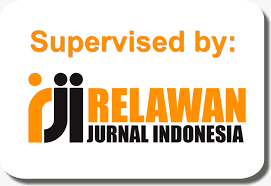THE CORRELATION BETWEEN SPEAKING ANXIETY AND SPEAKING ACHIEVEMENT OF THE EIGHTH GRADE STUDENTS
DOI:
https://doi.org/10.52333/djoee.v4i1.71Keywords:
speaking achievement, speaking anxietyAbstract
Speaking becomes a crucial ability that must be mastered in communication. This is quantitative research with a correlational design which aimed to find out whether or not there was a significant correlation between students’ speaking anxiety and their speaking achievement and the contribution of speaking anxiety to their speaking achievement. The population of this research was all of the eighth-grade students of SMPN 1 Tanjung Raja with a total number of 128 students. However, there were only 32 students involved as the sample in this research taken by using stratified random sampling. By using oral Proficiency categories, students‘ speaking achievement was scored in terms of the six sub-skills of grammar, vocabulary, fluency, pronunciation, comprehension, and task. Furthermore, Public Speaking Classroom Anxiety Scale (PSCAS) questionnaire developed used to measure speaking anxiety containing 17 items. Pearson Product-Moment was used to find out the correlation between variables. The result showed that there was no significant correlation between students speaking anxiety and their speaking achievement with r= (.177) lower than r-table (.349) and the level of probability (p) significance (.332) was more than (.05). It indicated that H0 was accepted and Ha was rejected. This study could have implications for English language teachers, students, and future researchers.
References
Brown, H. D. (2004). Language assessment: Principle and classroom practices. Pearson Education, Inc.
Cameron, L. (2001). Teaching languages to young learners. Cambridge University Press. https://doi.org/10.1163/9789460912696_007
Cohen, L., Manion, L., & Morrison, K. (2007). Research methods in education. Routledge Taylor & Francis Group. Creswell, J. W. (2012). Educational research: Planning, conducting, andevaluating quantitative and qualitative research. (4th ed.). Pearson, Inc.
Creswell, J. C. (2012). Educational Research: Planning, Conducting, and Evaluating Quantitative and Qualitative Research. NY: Pearson.
Fraenkel, J.R., Wallen, N. E., & Hyun, H. H. (2012). How to design and evaluation research in education. McGraw-Hill.
Harmer, J. (2007). The Practice of English Language Teaching. Harlow: Longman.
Johnson, R. B., & Christensen, L. (2014). Educational research quantitative, qualitative, and mixed approaches. (5th ed.). Sage Publications, Inc.
Landis, R. J., & Koch, G. G. (1977) The Measurement of Observer Agreement for Categorical Data. International Biometric Society, 33(1), 159-174.
Misti, A. (2018). The correlation between students’ speaking anxiety and their speaking performance at the junior high school 3 Tambang. Unpublished undergraduate thesis. UIN Suska, Pekanbaru, Indonesia.
Öztürk, G., & Gürbüz, N. (2014). Speaking anxiety among Turkish EFL learners: The case at a state university. Journal Of Language And Linguistic Studies, 10(1), 1–17.
Putra, J. U. (2018). An analysis of students’ anxiety in English speaking classroomat the third semester students of English department. Unpublished undergraduate thesis. Universitas Muhammadiyah Makassar, Makassar, Indonesia. Richards, J. C. (2008). Teaching listening and speaking from theory to practice. Cambridge University Press.
Sujarweni, W. (2014). SPSS for Research. Pustaka Baru Press.
Yaikhong, K., & Usaha, S. (2012). A measure of EFL public speaking class anxiety: Scale development and preliminary validation and reliability. Canadian Center of Science and Education, 5(12), 23–35. https://doi.org/10.5539/elt.v5n12p23
Downloads
Published
How to Cite
Issue
Section
License
Copyright (c) 2023 Aji Tamara Putra, Amalia Hasanah, Deta Desvitasari

This work is licensed under a Creative Commons Attribution-NonCommercial-ShareAlike 4.0 International License.







